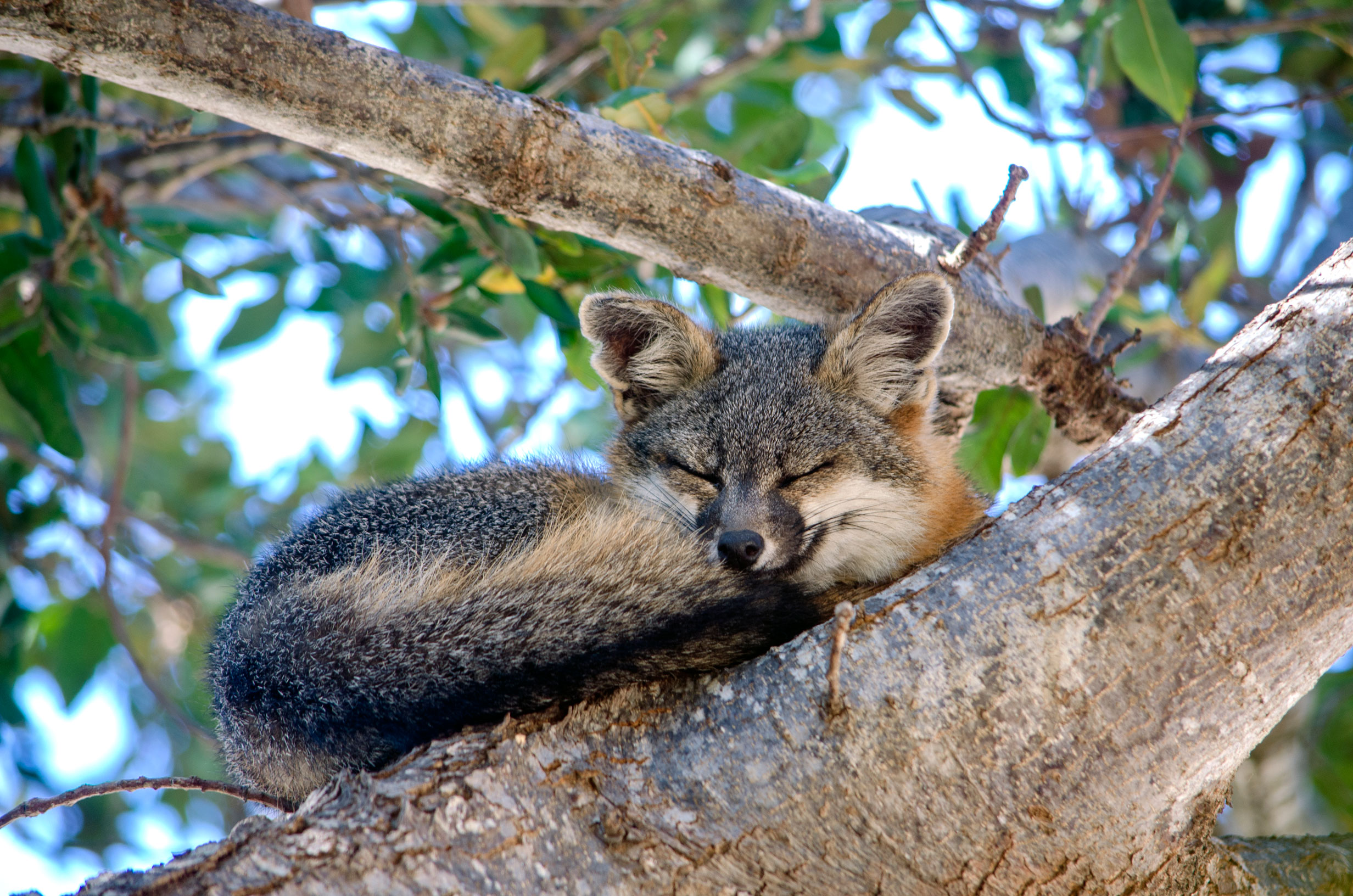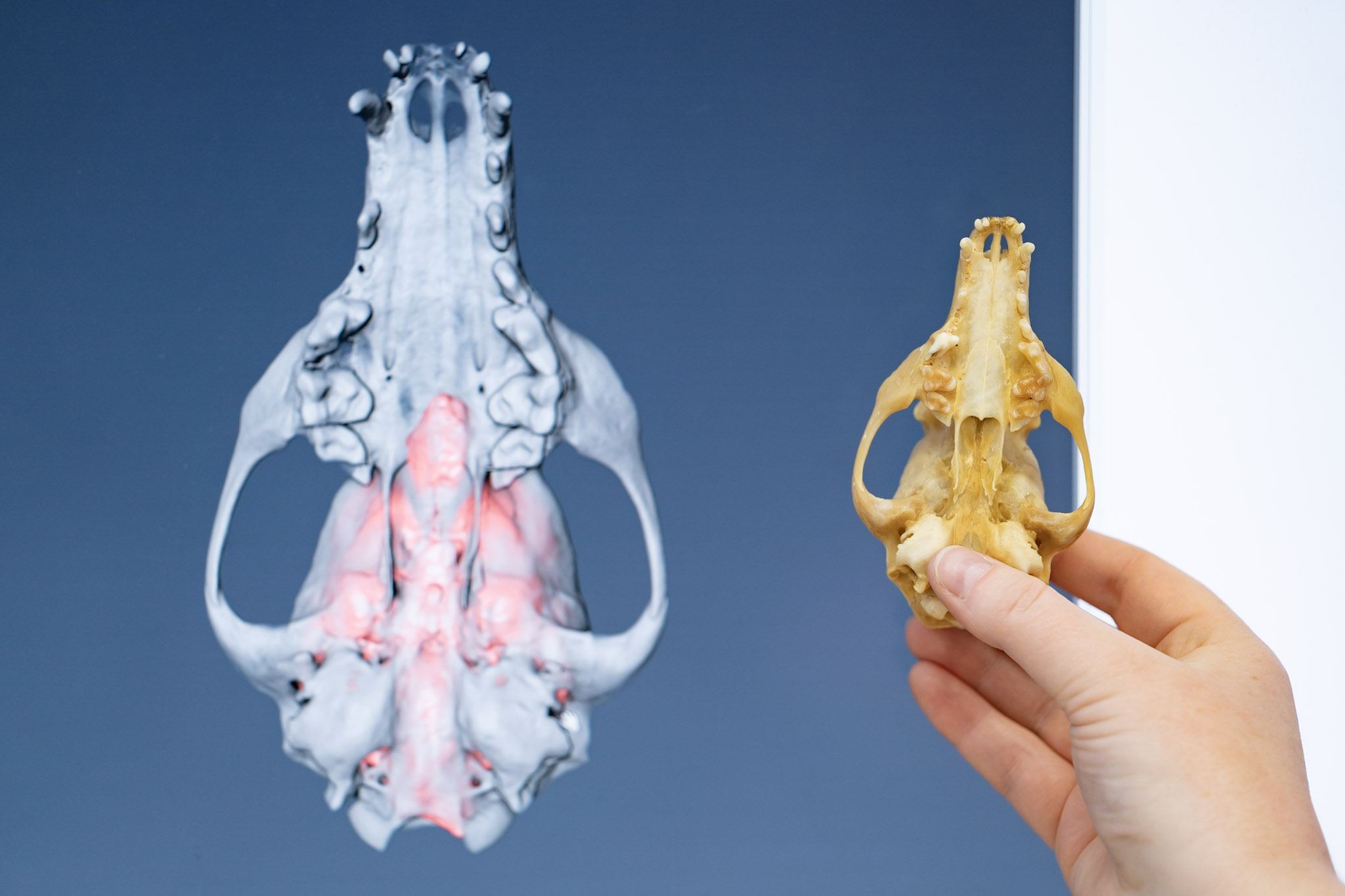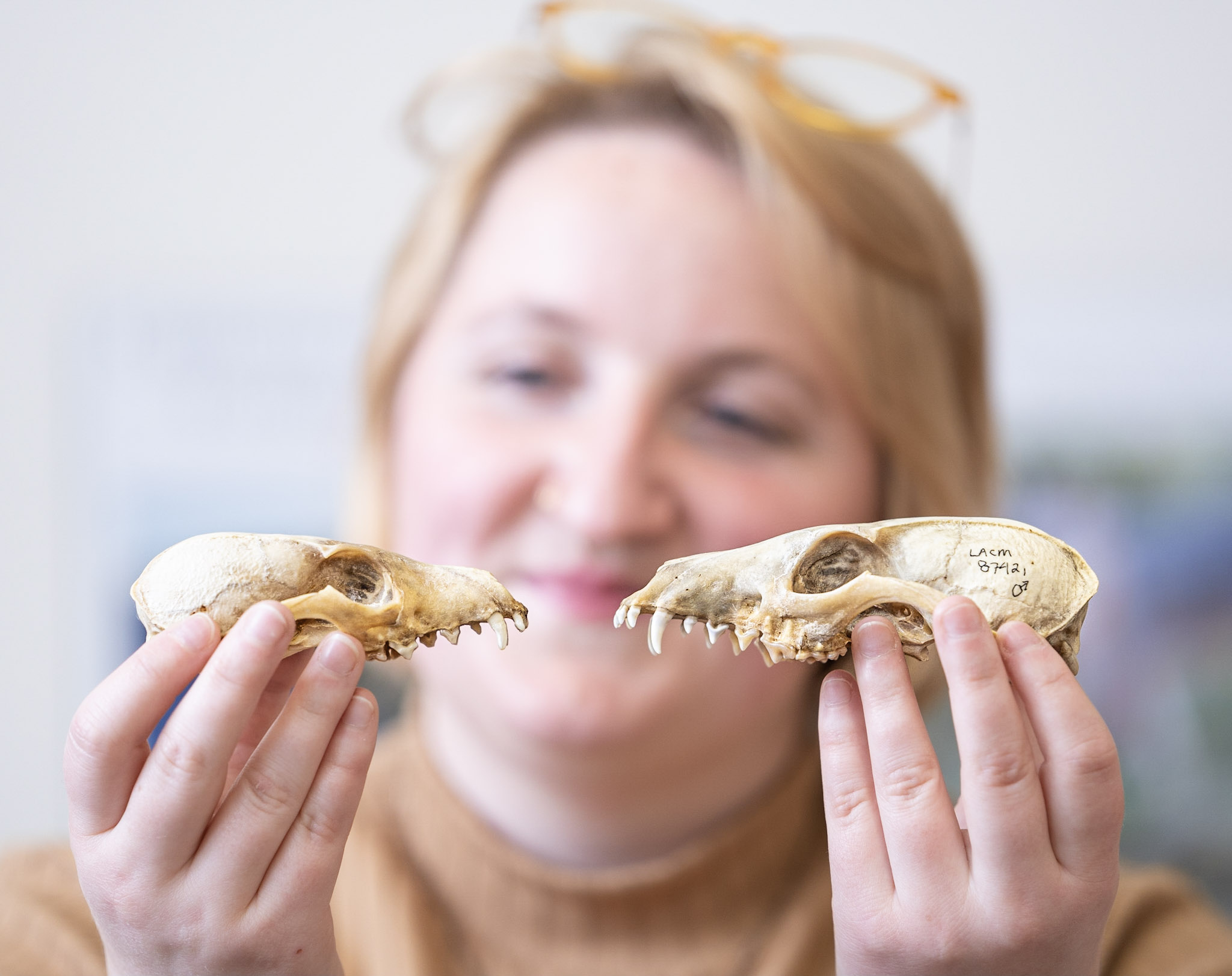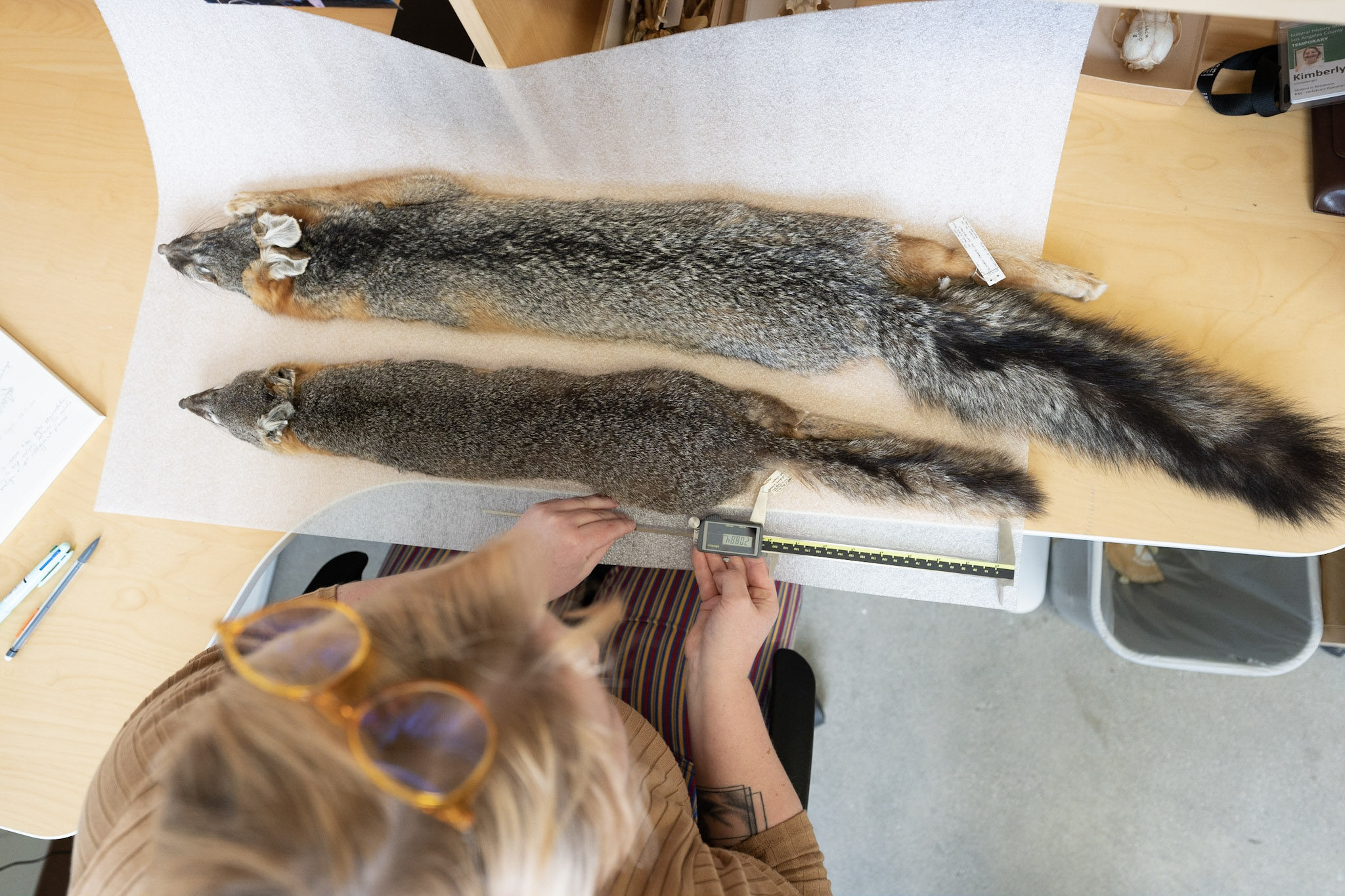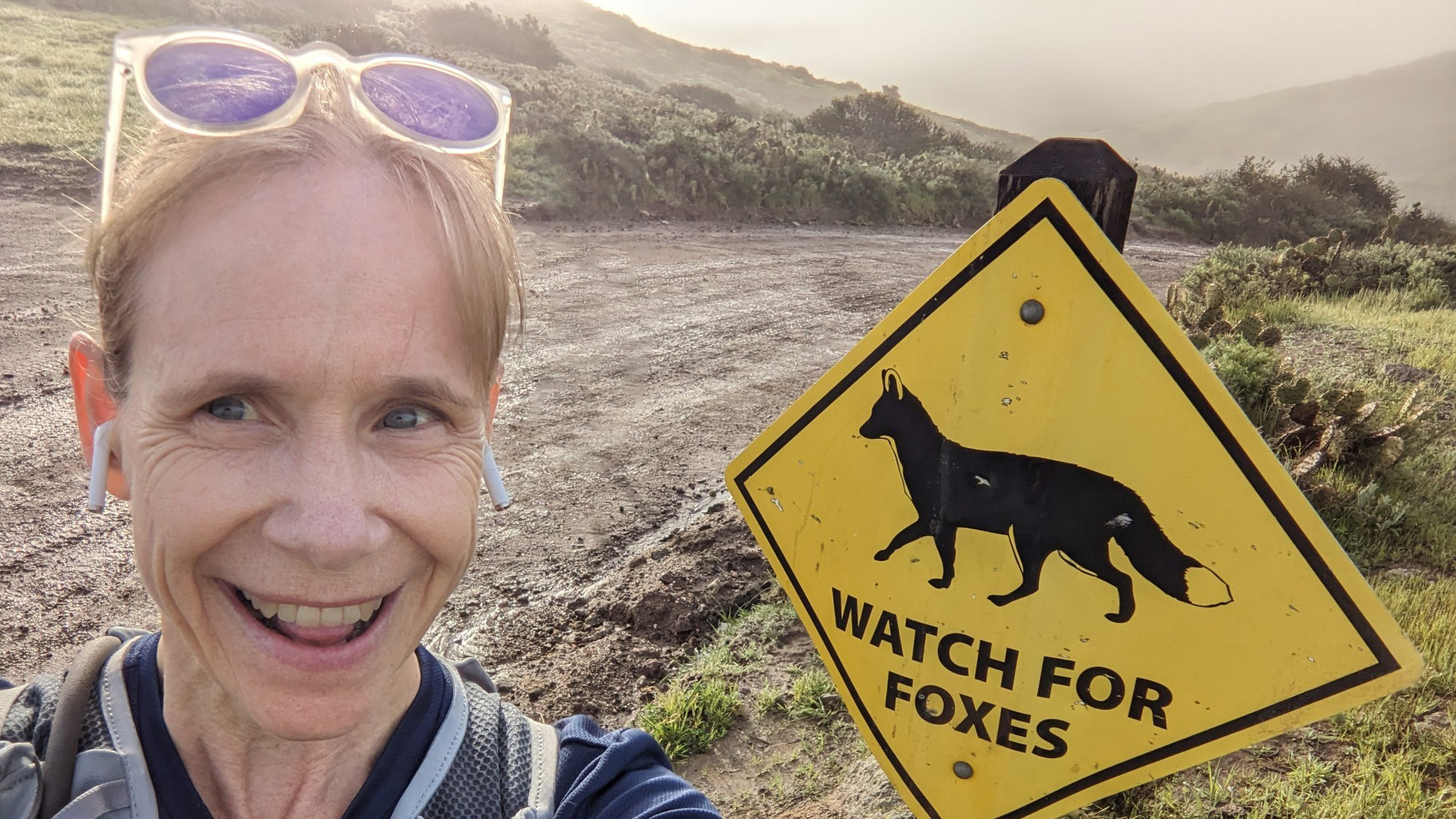USC, Natural History Museum collaborate to ensure long-term survival of Channel Island fox
Today, 22 miles of water separate Santa Rosa Island (one of six large Channel Islands) from mainland Southern California. But 20,000 years ago, the distance was much shorter. An ice age had sucked up much of the ocean’s water into a massive ice sheet on the northern continents, causing a drop of sea levels of about 400 feet, and only about 5 miles of water separated the land masses on either side of what is now the Santa Barbara Channel.
Five miles happens to be a very reasonable distance for elephants to swim – which, according to Natural History Museum of Los Angeles (NHMLA) Curator and Chair of Vertebrate Paleontology Xiaoming Wang, is why Santa Rosa is littered with mammoth fossils. The animals likely swam to Santa Rosa at some point during the ice age, and conditions on the island were favorable enough that they stayed. The fossils from Santa Rosa, however, highlight an interesting twist to the story: the swimming mammoths’ descendants gradually shrank in size and became a new species. Santa Rosa’s dwarf Mammuthus exilis (literally, “exiled mammoth”) was only 5-6 feet tall, about half the height of its mainland ancestors.

Wang has studied Mammuthus exilis extensively, and he says the animal’s story is a prime example of what scientists call the “island effect” or “island rule”: “If an animal that comes to an island is roughly larger than a breadbox, their descendants tend to shrink their body size because the island resources are limited compared to the mainland. This happened with the island mammoths over a fairly fast span of time,” Wang says.
Island rule, island fox
Santa Rosa’s mammoths died out at the end of the ice age about 11,000 years ago, but that island and the five other large channel islands are now home to another animal that evolved under the island rule: the Channel Island fox (Urocyon littoralis), a smaller relative of the mainland gray fox (Urocyon cinereoargenteus). Wang is a specialist in the evolution of fossil canids (dog-like carnivores, including foxes), and with the support of the USC Wrigley Institute for Environment and Sustainability,

he and USC Dornsife Professor of Biological Sciences Suzanne Edmands (left) have been working together for almost 15 years to uncover clues to the evolutionary history of and effective conservation strategies for the little fox.
Their collaboration is unusual because, while Edmands focuses on conservation genetics, Wang focuses on morphology (body shape and size). The two disciplines don’t typically work together, which means that researchers like Edmands often don’t know how the genes they’re studying relate to animals’ evolutionary adaptations, and researchers like Wang often aren’t aware of the molecular or genetic mechanisms that affect morphology. The two scientists want to bridge those gaps because they believe that, in doing so, they’ll have a better shot at supporting conservation and management of what Edmands calls “a very unique and threatened species.”
The Channel Island fox is in a perilous position due to an outbreak of canine distemper and increased predation by golden eagles in the 1990s. These pressures brought the species to the brink of extinction, but thanks to intensive conservation work, it has since been upgraded to “near threatened” status. Because the current population was rebuilt from very low numbers, however, the foxes currently living on the Channel Islands have very low genetic diversity. This makes them potentially more vulnerable to threats such as disease, physical weakness or deformities, and environmental changes.
There is some good news, however. In the first phase of their research, Wang, Edmands, and then-USC Dornsife Ph.D. student Nicole Adams ‘19 dug deeper into the molecular side of things. They used tissue samples from the NHMLA’s collection and fox feces collected in the wild to study the bacteria in the fox’s gut (its microbiome) and the portion of its genes that are actually expressed (its exome). They found that, although exome diversity in the fox population is low and has declined further since the 1990s, the animals have reasonably good diversity in their gut microbiome.
“The gut microbiome is super important in immunity and general health. It could be an alternate way for the foxes to deal with environmental changes,” Edmands says.
Finding the origin(s) of a species

In the current research phase, Edmands and Wang are working with USC Dornsife marine and environmental biology Ph.D. student Kimberly Schoenberger (right) to investigate how the fox may have ended up on the Channel Islands in the first place. Based on the fossil record, scientists believe that mainland gray foxes first came to the northern Channel Islands 6-8,000 years ago and later reached the southern islands as well. Unlike the mammoths, the smaller foxes would have been unlikely to swim the channel, which grew wider after the ice age ended. Wang says, however, that the foxes could have “rafted” over by clinging to pieces of wood or other floating objects. They might also have arrived with Indigenous people, who developed thriving settlements in the Channel Islands during that period.
Working with NHMLA specimens, Schoenberger is comparing morphological differences between mainland gray foxes and island foxes. She uses a specialized data visualization program to create 3D models of the two species’ skulls from CT scans, then takes measurements of interior and exterior dimensions. Because mammals’ brains generally grow to completely fill the insides of their skulls, she can use the interior space captured in the scans to generate a model of the brains, which are not preserved in historic samples. These “endocasts” can be used to both examine the shape of the brain and to determine how large the two species’ brains are in comparison to their overall body sizes.
“Through either domestication or adaptation to island life, larger mammals often develop a smaller brain size because the brain is a very resource-heavy organ, and there has to be a reason to maintain it,” Schoenberger says. “If the animal doesn’t need that same cognitive capacity to evade predators or hunt for prey, they might evolve a smaller brain size compared to the rest of their body. By comparing how brain size changed as the island fox evolved, we can infer a lot of additional information about how and why that might have happened.”
The tools used for this work are cutting-edge in paleontology but already somewhat familiar to Schoenberger, who worked as a 3D video production specialist for a biotech company before going back to school to study biology. She especially likes the technology-based approach because it allows her to take measurements and cross sections of the skulls without damaging them.
Morphological data alone won’t tell Schoenberger, Edmands, and Wang everything they want to know about the island fox’s evolutionary journey. But when the morphological data is combined with genetic data, a more complete picture can emerge.
“Foxes are closely related to domestic dogs, which are really well-studied. Dogs are a great reference point because there are breeds that have been artificially selected for certain characteristics, and then there are ‘village dogs’ [dogs that are not pets, but live in or around human settlements] that are less selected,” Edmands says.
Researchers have identified the functions of a wide variety of dog genes, including genes that affect insulin processing, skeletal formation, body size, and tameness – all traits that are useful in assessing the survivability of a species. Edmands can look for those same genetic markers in the island fox and use molecular changes to determine whether the genes have actually been expressed in the fox, or are dormant parts of its genome. She can even estimate when and how rapidly any genetic changes occurred. Paired with the morphological data Schoenberger is currently collecting, this information can help clarify whether the foxes evolved to their current state on their own or as a result of domestication.
Strength in interdisciplinarity
The strength of this cross-disciplinary approach is partly what fuels Wang’s enthusiasm for the trio’s work.
“This project is great because we’re training students who are exposed to the natural history collections or morphological pursuits, and then we’re also encouraging students to broaden themselves to get the DNA side of the connection. Science has a disciplinary tendency to do something that is comfortable. We want to breach the comfort zone and train our students to be comfortable with both approaches,” he says.
Since its rebound from the catastrophe of the 1990s, the fox population has remained healthier than expected. Ultimately, Edmands, Wang, and Schoenberger are looking to uncover why that is the case. Are there specific characteristics of the fox’s genome that help outweigh the overall lack of genetic diversity? Is its microbiome a factor? Have the nature and timing of morphological changes worked to the fox’s benefit? Or is it all of the above? The answer (or answers) could benefit more than just the Channel Island fox.
“This is a really useful and geographically isolated study to be able to assess the implications of long-term small population size,” Schoenberger says. “A lot of conservation efforts are based on protecting these small populations, so when we look at these factors for the island fox, we can potentially inform conservation efforts for other species.”
The research highlighted in this story was published on Molecular Ecology and funded in part by a grant from the Offield Family Foundation through the USC Wrigley Institute for Environment and Sustainability and by USC Dornsife College of Letters, Arts and Sciences.

